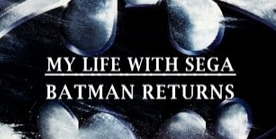It’s time for another “classic” episode of My Life with SEGA. This was my follow-up to Technocop. Both games are similar in that they’re both action/adventure titles with driving and side-scrolling stages. The only difference is that Outlander’s actually good.
Don’t believe me? Check it out.
Like this video? Subscribe to the SEGAbits YouTube channel!
Ad:





The driving sections really are a technical triumph. I believe this is one of the few games for the Genesis/MD that implemented some sort of software-based scaling effect, and it looks great. The on-foot portions are a bit lackluster, but you have to admire the ambition of the game designers. I definitely hope to pick this one up some day.
Software-based scaling effect? Do you know of any other titles that may have used this technique? I certainly admire the effort. It’s a fun game and, while I’ve yet to beat, I still enjoy picking it up and going for a drive. It’s cheap and fairly common. Shouldn’t have a problem picking up a copy.
Some games with a scaling effect: King of the Monsters features it on the title logo in the attract mode. Gunstar Heroes, on the Sega logo at startup. The Road Rash series and Skitchin also feature scaling on the scenery and opponents. However, you can see in Road Rash/Skitchin/Outlander that the framerate takes a hit. Mega Turrican might be the best example for a game that still runs everything at a high framerate while using such effects… it uses it to great effect in a variety of ways for various bosses and backgrounds, as well as silky smooth rotation effects.
Just to be clear, I’m referring to the technique of scaling and/or rotating a single sprite image, which was usually handled by hardware in arcade games like Sega’s superscaler classics. Since the Genny/MD didn’t have that capability built into it, most games that normally would have utilized scaling (After Burner II, Space Harrier II, etc.) instead used a common technique of swapping out multiple sprites of the same enemy or object drawn at different sizes. As a result, you can often see the transition between images so it’s not quite as smooth as a single image that’s scaled or rotated. But both are pretty cool techniques that I can dig aesthetically for different reasons. It’s just intriguing to see the Genesis do something that was thought impossible in its early days.
I remember playing Road Rash. Played that with my brother all the time. I see what you mean about After Burner II and Space Harrier II. Once I got After Burner for the 32X, I popped in After Burner II on Genesis and – you’re absolutely right – you can really see the difference. Like you said, great titles and technically impressive when you take into consideration the limitations of the console.